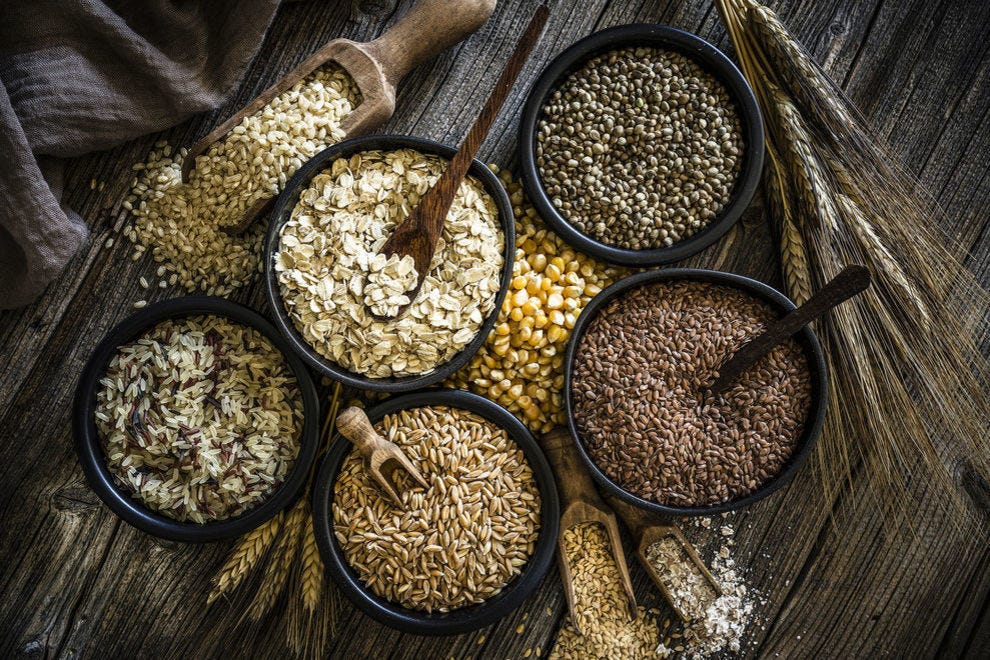Related Post
Photo courtesy of Getty Images / fcafotodigital
Add more grains to your diet
Grains are a big part of our diet. In fact, grains used to be the foundation of the USDA Food Pyramid before it was replaced by the MyPlate system.
For many, the diversity of grains doesn’t extend past cereals, oats, rice, and wheat flour. But there are so many other kinds of grains, some of which predate our modern grains – and they’re packed with nutrients and complex flavors. From baking to cooking, here are 10 ancient grains you should try in your kitchen.
Photo courtesy of Getty Images / Karisssa
Amaranth
This naturally gluten-free grain has been cultivated for around 8,000 years. Once the staple food of the Incas, Mayans and Aztecs, amaranth is rich in proteins that other grains lack, all nine essential amino acids, fiber, antioxidants and other micronutrients.
It’s earthy and nutty in flavor, and though it can be enjoyed like a cereal, it can also be ground down to make a flour that works well in pancakes and breads.
Photo courtesy of Getty Images / Karisssa
Spelt
Spelt, an ancient variety of wheat, works incredibly well for baking anything from breads and muffins, to cookies and other desserts. It adds a bit of sweet nuttiness to anything it’s added to, is an excellent source of fiber, has more protein than conventional wheat, and it’s more water-soluble, meaning it’s easier to digest.
When it comes to experimenting with ancient grains, try baking with spelt first as it can fully replace all-purpose flour in most recipes.
Photo courtesy of Getty Images / alpaksoy
Einkorn
Einkorn is the oldest wheat known, with scientists believing that it was cultivated up to 10,000 years ago. As it is nutrient-rich and full of flavor, it’s the perfect replacement for whole wheat flour, especially when it comes to rustic, whole grain breads.
Note that if you’re baking bread with einkorn, it will come out a bright yellow color because of the carotenoids found within the grain. Some believe it’s these carotenoids that give einkorn its anti-inflammatory properties.
Photo courtesy of Getty Images / agil73
Khorasan
Khorasan, sometimes called kamut or even kamut khorasan, is an ancient grain that comes from Mesopotamia and ancient Egypt. Its firm texture paired with its earthy, nutty taste, makes it a great grain for baking. However, it’s not a full substitution for all-purpose flour, like spelt.
Experienced bakers recommend using only 25% – 50% of kamut khorasan, depending on the recipe.
Photo courtesy of Getty Images / bjdlzx
Millet
If you’re on a gluten-free diet, millet is an excellent replacement grain in baking. It adds a sweet corn flavor and texture to whatever it’s baked in. And because millet is a seed, it can be ground into a flour or prepared like a whole grain. When cooked like a whole grain, it comes out fluffy and not as chewy as other grains like farro or quinoa.
Photo courtesy of Getty Images / Claudio Caridi
Emmer
Emmer, along with einkorn and spelt, are varieties of farro, but if you’ve eaten farro at a restaurant, it was most likely emmer. It can be cooked like a whole grain, or ground into a flour for baking. Whether you’re cooking with emmer or baking with it, it’s one of those grains that’s great with savory flavors such as onions, garlic and other aromatic spices.
Photo courtesy of Getty Images / sayanjo65
Sorghum
Like many ancient grains, sorghum can be used for baking or cooking, but unlike many of these grains, sorghum can be turned into a syrup. Sorghum syrup is sometimes confused with molasses, but they differ in origin, taste, texture and processing techniques. Sorghum syrup is also thinner and has a slightly more sour taste than molasses, which makes it more appropriate for salad dressings and sauces.
Photo courtesy of Getty Images / bhofack2
Rye
Thanks to rye whiskey and rye bread, rye is a little more common than some of the other ancient grains on this list. Over 7,000 years old, rye is a grass that is part of the wheat family. It’s mostly used to make flour, but it can also be used in brewing beer and distilling spirits like whiskey and even vodka.
Photo courtesy of Getty Images / 13threephotography
Barley
If you’re keeping track of your blood glucose levels, barley is an excellent choice as it’s one of the lowest glycemic index grains available. Barley can be cooked in water or with a broth until soft and tender. Barley can also be ground into a flour and used as a full substitution for all-purpose flour in baking.
Photo courtesy of Getty Images / minadezhda
Buckwheat
Another gluten-free ancient grain, buckwheat is an outstanding source of fiber and other nutrients. There are a lot of ways to use buckwheat in the kitchen. As a flour, buckwheat is great in pancakes, breads, scones and muffins. It can also be used to make gluten-free noodles and pastas.
As a whole grain, buckwheat can be enjoyed on top of salads, in soups, and used as fillers in meat or vegan burgers.






